2 Obstacles S&P 500 Bulls Must Overcome This Week With Rate Cuts Already Priced In
2024.08.26 03:48
Powell signaled a shift towards rate cuts during his speech last Friday – a move the market has anticipated for nearly two years.
Investors have long been front-running this rate-cut narrative, seemingly forever. Now, as we head into a new week for markets, the faces two significant challenges to maintain its bullish momentum.
1. High Valuations
Do we believe that rate cuts aren’t already priced into equity valuations?
With the S&P 500 trading at 22 times next year’s earnings, can we say rate cuts aren’t factored in? Also, the PE ratio of the S&P 500 today is almost double what it was during the 1994 soft landing campaign.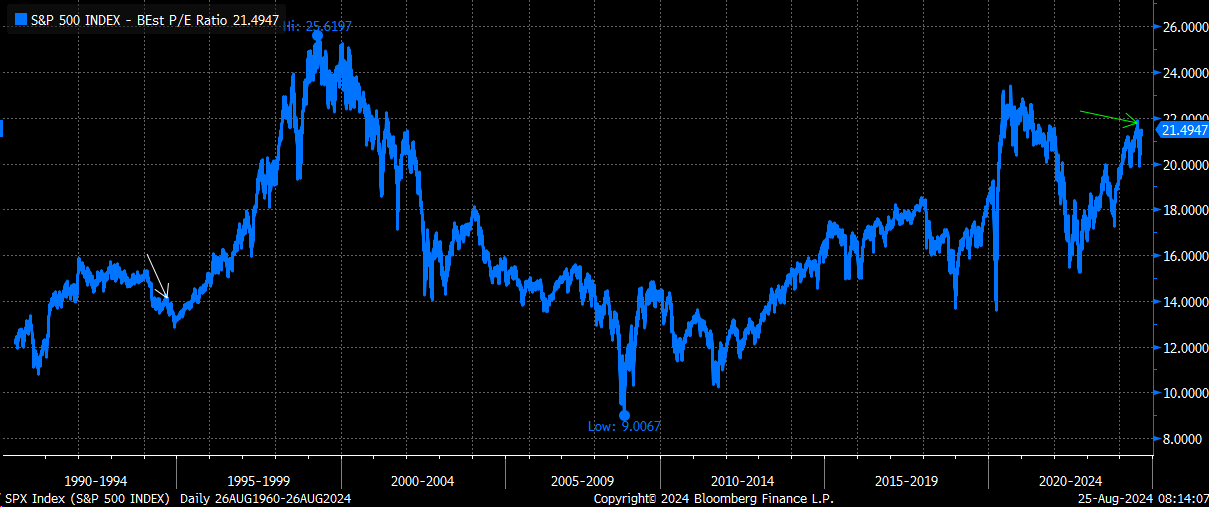
The next twelve months (NTM) EPS growth estimates for the S&P 500 are rolling over, whereas in 1994, the growth rate was accelerating into 1995. In 1994, we had a low PE ratio paired with accelerating growth, which is the opposite of today. PE ratios tend to anticipate growth; as they anticipate slowing growth, they often trade ahead of expected growth and come down.
The EPS growth tends to track the Treasury rate over time. This is likely because a falling or rising 10-year rate often signals the pace of economic growth.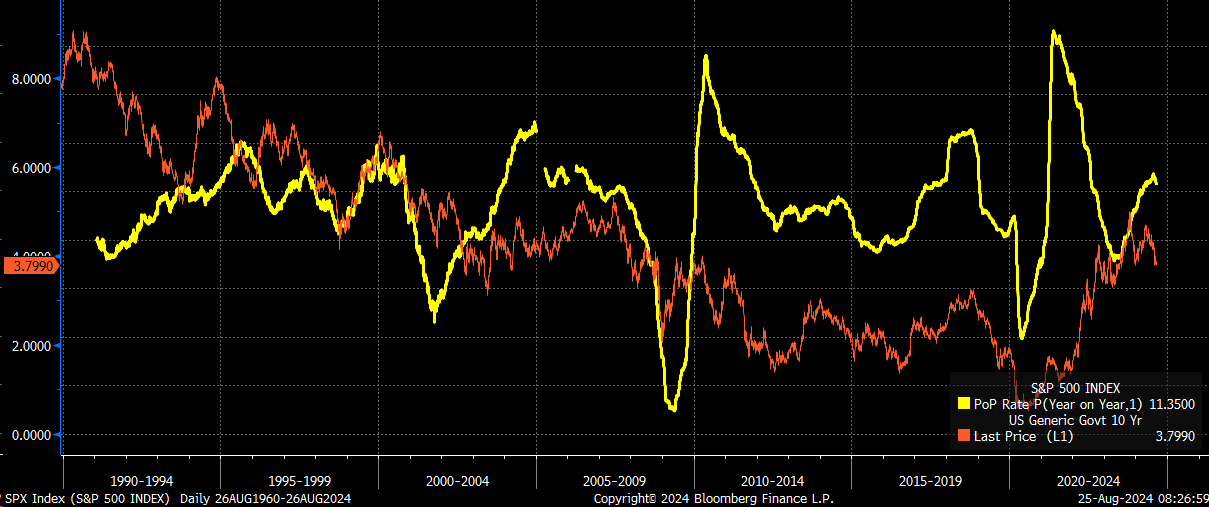
The EPS growth also tends to follow breakeven inflation expectations because these expectations measure economic growth.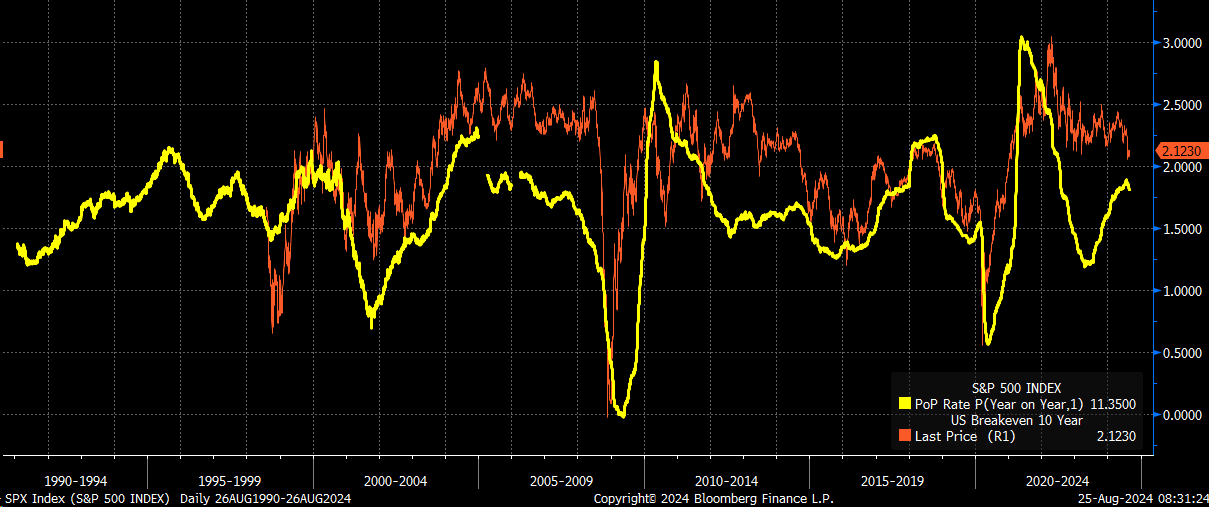
It used to be that China’s credit impulse led earnings growth, but it has wholly died and has been non-existent since peaking in 2020, with recent data showing it has vanished altogether.
The , which represents the semiconductor sector, was heavily tied to China’s credit impulse. At this point, whether it is, is unclear.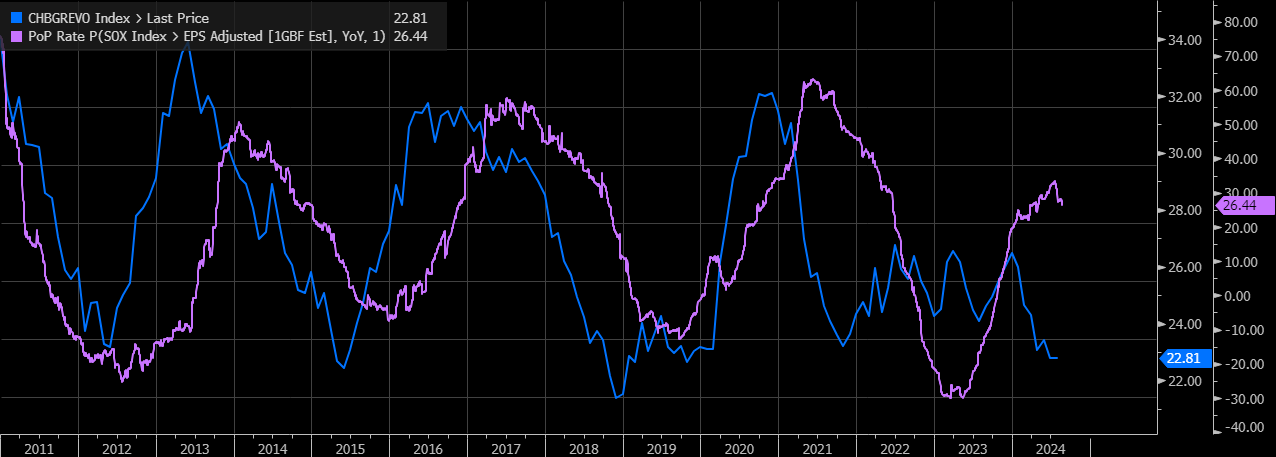
Or perhaps the surge in U.S. spending has helped to offset some of the decline in China’s credit impulse.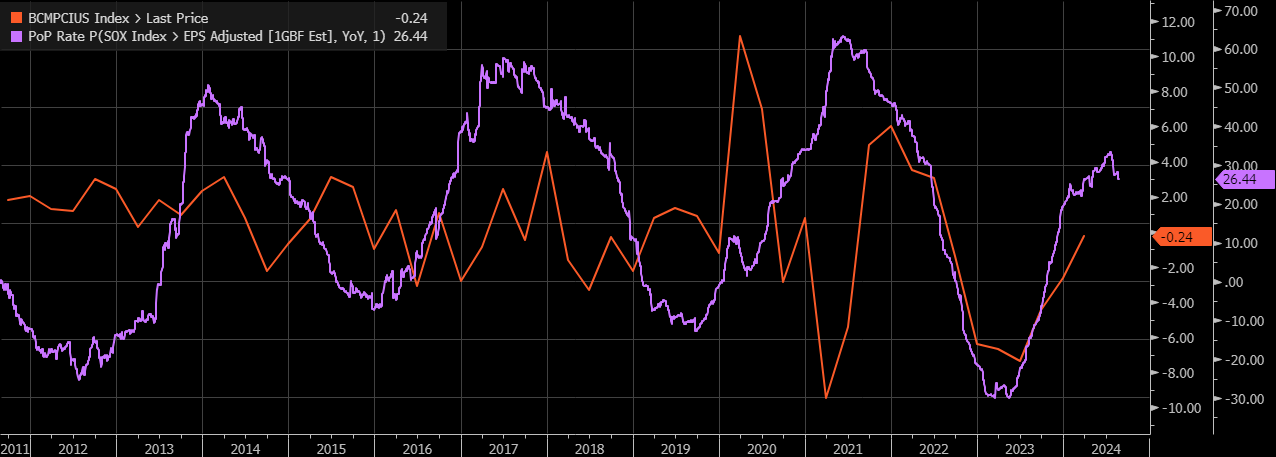
Considering all the points above, it seems that the market has already front-run the Powell Pivot, especially for the major indexes. PE multiples are stretched, and earnings growth rates, based on the available data, appear to be rolling over. At the same time, economic growth is certainly slowing, as evidenced by the declining rate of inflation.
From a fundamental standpoint, the pullbacks we’ve seen in the market so far make sense, as does the rebound. This seems to be a period of transition, similar to what was observed in the winter of 2022.
2. Bearish Engulfing Patterns in Indexes
Some social media influencers have been discussing how bearish engulfing patterns might not be as bearish as they seem. However, the bearish engulfing pattern observed last Thursday seems similar to the previous pattern starting in July 2023.
Thursday, July 27, 2023, and Thursday, October 12, 2023, stand out as two instances of bearish engulfing patterns.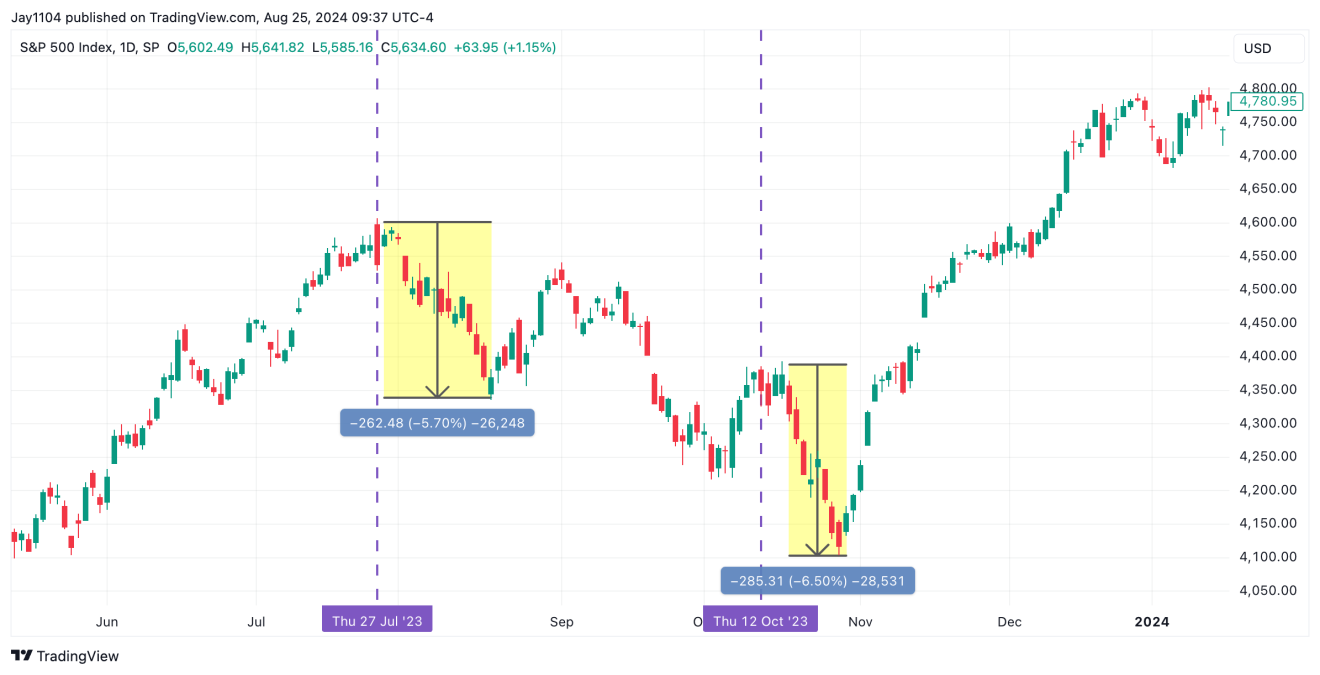
Then there were also bearish engulfing patterns on Thursday, April 4, 2024, and Thursday, May 23, 2024.
There were the bearish engulfing patterns on Thursday, June 20, 2024, and Thursday, July 25, 2024.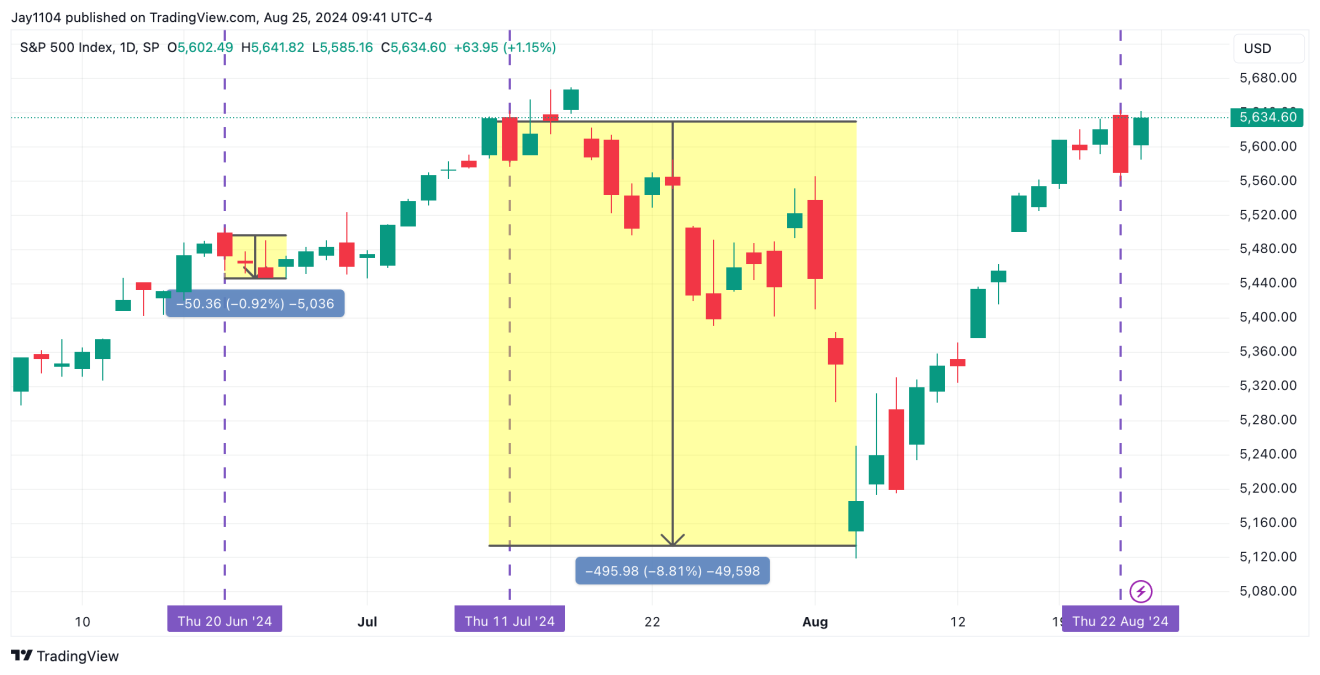
Then there was this week’s bearish engulfing pattern on Thursday, August 22, 2024.
These patterns showed up on a Thursday and were typically followed by a positive day on Friday. However, it wasn’t until the following Wednesday that the real impact was felt.
Since October 2023, five bearish engulfing patterns have been followed by a positive Friday, with the sell-off not starting until Wednesday of the following week. The one fake-out appeared to come in May 2024.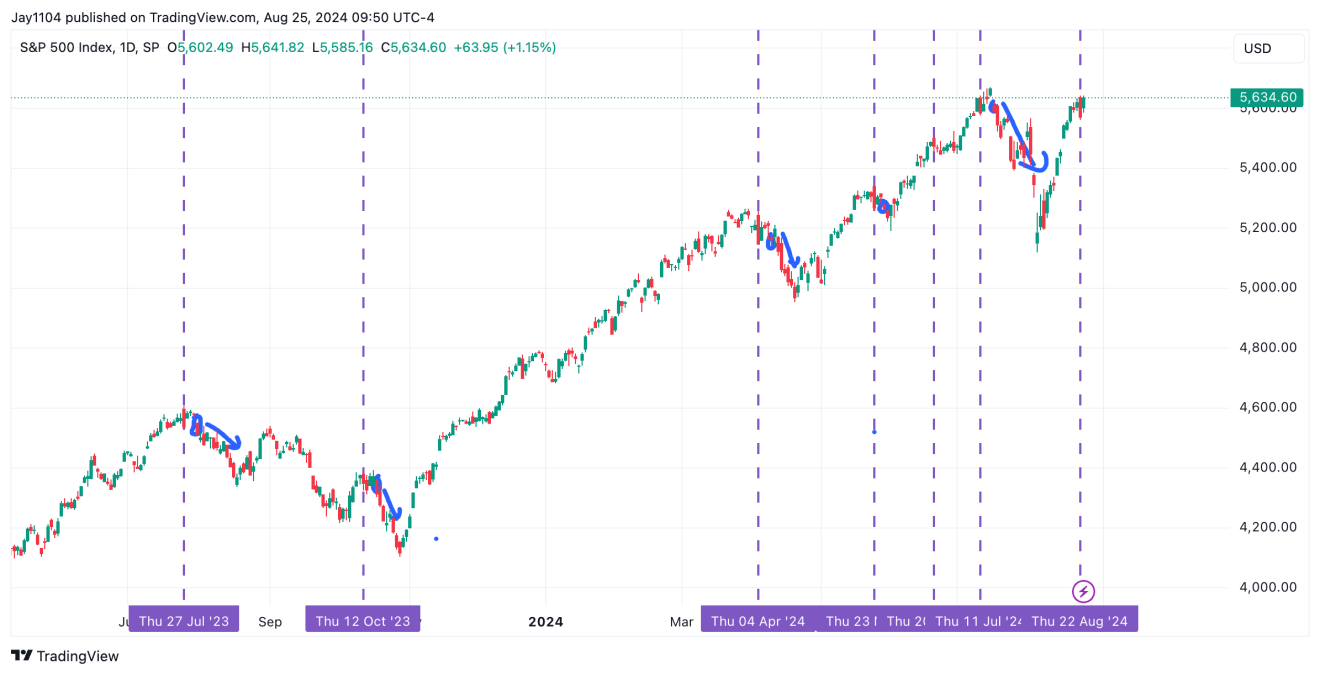
So, I guess we won’t know the outcome of this past Thursday’s bearish engulfing pattern until Wednesday, which, coincidentally, is the day Nvidia (NASDAQ:) reports its results.
Original Post








